-

新人教版高中英语必修2Unit 4 History and Traditions-Listening&Speaking&Talking教案一
This unit is about history and traditions. From the opening page, we can know that this unit will introduce the history and traditions around the world. As Marcus Garvey says “A people without the knowledge of their past history, origin and culture is like a tree without roots”, it is important for students to realize the importance and value of knowing the history and traditions and their further meanings. And this part ( listening and speaking ) is divided into two parts: Part A---share views on historic sites, Part B ---talk about a visit to a historic tourist destination. By talking with a foreigner, the speakers introduce the historic attractions and their cultures. Part A is that William, a British student, who was going to visit the Confucius Temple and a Chinese student, Xiao Kong, who was going to the Confucius Temple to meet with the members of the research group, went together and exchanged their views on the Confucius Temple, Confucius, Confucius' descendants and Confucius' educational thoughts. Part B is a conversation between Xiao Yan, a youth hostel receptionist and Paul, a backpacker about the feelings and experience after visiting the Chinese famous tourist attraction Pingyao.1. Guide students to understand the content of listening texts in terms of the whole and key details; 2. Cultivate students' ability to guess the meaning of words in listening; discuss with their peers how to talk about historic spots and great person.3. Instruct students to use functional sentences of showing one’s excitement, surprise and disappointment.1. Guide students to understand the content of listening texts in terms of the whole and key details; 2. Cultivate students' ability to discuss with their peers the related topics.3. Enable students to use the functional items of showing one’s excitement, surprise and disappointment.

新人教版高中英语必修2Unit 4 History and traditions教案
这个地区有着深厚的传统。既学既练:为了让更多的外国游客了解中国文化,欣赏中国美丽的自然风光,感受中国发生的巨大变化,某外文杂志社将出版一本英语小册子来介绍中国的旅游景点。该杂志社邀请你为该小册子写一篇英语短文来介绍杭州,内容包括:1.杭州的位置(中国东南部)、面积(16 000多平方公里)及历史(2 200多年)等;2.杭州的旅游特色(自然风景、传统文化、特色小吃等);3.希望更多的游客来杭州参观。注意:1.词数80左右;2.可适当增加细节,以使行文连贯。Located in the southeast of China, Hangzhou is a beautiful city.Dating back more than 2,200 years, Hangzhou covers an area of more than 16,000 square kilometers.In Hangzhou, you can visit the West Lake, whose scenery is fascinating.In addition, you can’t miss its cultural relics and historical sites, from which you will learn more about excellent Chinese traditional culture and traditions.In Hangzhou, the special snacks are famous and visitors from different parts of the world think highly of them.As a tourist attraction, Hangzhou attracts a large number of visitors from home and abroad every year.Once you come to China, Hangzhou is a scenic spot you can’t miss.

新人教版高中英语必修2Unit 5 Music-Discovering Useful Structures教案一
Step1:自主探究。1.(教材P52)Born(bear) in the USA on 2 January 1970, Whitacre began studying music at the University of Nevada in 1988.2.(教材P52) Moved(move) by this music, he said, “It was like seeing color for the first time.”3.(教材P56)I was very afraid and I felt so alone and discouraged(discourage).4.(教材P58)Encouraged(encourage) by this first performance and the positive reaction of the audience, I have continued to play the piano and enjoy it more every day.Step2:语法要点精析。用法1:过去分词作表语1).过去分词可放在连系动词be, get, feel, remain, seem, look, become等之后作表语,表示主语所处的状态Tom was astonished to see a snake moving across the floor.汤姆很惊讶地看到一条蛇正爬过地板。Finally the baby felt tired of playing with those toys.终于婴儿厌倦了玩那些玩具。注意:1).过去分词作表语时与被动语态的区别过去分词作表语时,强调主语所处的状态;而动词的被动语态表示主语是动作的承受者,强调动作。The library is now closed.(状态)图书馆现在关闭了。The cup was broken by my little sister yesterday.(动作)昨天我妹妹把杯子打碎了。2)感觉类及物动词的现在分词与过去分词作表语的区别过去分词作表语多表示人自身的感受或事物自身的状态,常译作“感到……的”;现在分词多表示事物具有的特性,常译作“令人……的”。

新人教版高中英语必修2Unit 5 Music-Listening and Speaking教案
This lesson is about music. Students can classify the types of music through the instruments and its sound and can talk about their preferences about music, even join some activities and play a role in them according to their musical talents. On the basis, they are guided to use the languages to express their preferences and some plosive sounds and their rules.1. Classify the music types through the instruments and its sound.2. Listen and understand what the speakers’ preferences are and the reasons; talk about their own preferences and give their own reasons, using these sentences: “What kind of music do you like? And why? “ “Because it makes/gives me energy/peaceful.../touches my heart...”.3. Learn some plosives and the rules.4. Join some activities and play a role in them according to the talents. 1. Listen and understand what the speakers’ preferences are and the reasons;2. talk about their own preferences and give their own reasons, using these sentences: “What kind of music do you like? And why? “ “Because it makes/gives me energy/peaceful.../touches my heart...”.3. Learn some plosives and incomplete plosives and its rules.Step 1 Lead inPoint at the pictures on P50 and ask Q1: What are the people doing in the pictures below?Q2: What kind of music they are?Then play the MP3s one by oneStep 2 ListeningTask 1: A reporter from the school newspaper is interviewing students about music. Listen to the interviews. Draw lines between the words to make complete sentences. Some words will not be used.

新人教版高中英语必修2Unit 5 Music-Reading For Writing教案一
(4)Now we have heard a number of outstanding speeches ... 我们已经聆听了许多精彩的发言……(5)Because we wanted the nations of the world, working together, to deal with ... 因为我们希望全世界各国团结起来去应对……(6)And if we do not act ... 如果我们不采取行动……(7)Now, I share the concerns that have been expressed ... 我也同意对于……表达的担心(8)Let us show the world that by working together we can ... 让我们告诉全世界,通过一起努力我们可以……(9)It is now time for us to ... 是时候我们……(10)And I have always wished that ... 我一直希望……(11)Thank you for letting me share this day with me.感谢你们和我共度这一天。实践演练:假如你是高中生李华,你校将举办一次以“音乐”为主题的演讲比赛,请你按照主题,写下你的演讲稿。注意:词数100左右。First of all, thank you for listening to my speech. My topic is: love music like love yourself.Music is like the air we need to maintain our normal lives around us. You can't imagine how terrible a world without music would be. Movies and TV shows have no music, only dry conversations and scenes; mobile phones only vibrations; streets only noisy crowds; cafes, western restaurants only depressed meals. What a terrible world it is!As a student, I hope we all can enjoy the fun brought by music in our spare time. Instead of just listening to music, we can even make our own music. Let's enjoy the fun of music!Thanks again for your attention!

新人教版高中英语必修3Unit 2 Morals and Virtues教学设计四
3.Teachers ask different groups to report the answers to the questions and ask them to try different sentence patterns.The teacher added some sentence patterns for students to refer to when writing.Step 4 Writing taskActivity 51.Write the first draft.Students first review the evaluation criteria in activity 5, and then independently complete the draft according to the outline of activity 4, the answers to the questions listed in the group discussion and report, and the reference sentence pattern.2.Change partners.The teacher guides the students to evaluate their partner's composition according to the checklist of activity 5 and proposes Suggestions for modification.3.Finalize the draft.Based on the peer evaluation, students revise their own compositions and determine the final draft.Finally, through group recommendation, the teacher selects excellent compositions for projection display or reading aloud in class, and gives comments and Suggestions.Step 5 Showing writingActivity 5T call some Ss to share their writing.Step 6 Homework1. Read the passage in this section to better understand the passage.2. Carefully understand the hierarchical structure of the article, and deeply understand the plot of the story according to the causes, process and results;3. Independently complete the relevant exercises in the guide plan.1、通过本节内容学习,学生是否理解和掌握阅读文本中的新词汇的意义与用法;2、通过本节内容学习,学生能否通过人物言行的对比分析道德故事的深层内涵;3、通过本节内容学习,学生能否根据故事的起因、经过和结果来深入理解故事的情节,从而了解文章的层次结构;4、结合现实生活案例发表自己的见解和看法,写一篇观点明确、层次分明的故事评论。

新人教版高中英语必修3Unit 2 Morals and virtues教学设计一
(2) students are divided into groups according to the requirements of activity 3. Each student shares a story of personal experience or hearing-witnessing kindness, and then selects the most touching story in the group and shares it with the whole class. Before the students share the story, the teacher can instruct them to use the words and sentence patterns in the box to express. For example, the words in the box can be classified:Time order: first of all, then, after that, later, finally logical relationship :so, however, although, butTeachers can also appropriately add some transitional language to enrich students' expression:Afterwards, afterwards, at last, in the end, eventuallySpatial order: next to, far from, on the left, in front ofOtherwise, nevertheless, as a result, therefore, furthermore, in addition, as well asSummary: in a word, in short, on the whole, to sum up, in briefStep 8 Homework1. Understand the definition of "moral dilemma" and establish a correct moral view;2. Accumulate vocabulary about attitudes and emotions in listening texts and use them to express your own views;3. Complete relevant exercises in the guide plan.1、通过本节内容学习,学生能否理解理解“道德困境”的定义;2、通过本节内容学习,学生能否通过说话人所表达的内容、说话的语气、语调等来判断其态度和情绪;3、通过本节内容学习,学生能否针对具体的道德困境发表自己的看法和见解,能否掌握听力理训练中的听力策略。

新人教版高中英语必修3Unit 3 Diverse Cultures教学设计一
Activity 81.Grasp the main idea of the listening.Listen to the tape and answer the following questions:Who are the two speakers in the listening? What is their relationship?What is the main idea of the first part of the listening? How about the second part?2.Complete the passage.Ask the students to quickly review the summaries of the two listening materials in activity 2. Then play the recording for the second time.Ask them to complete the passage and fill in the blanks.3.Play the recording again and ask the students to use the structure diagram to comb the information structure in the listening.(While listening, take notes. Capture key information quickly and accurately.)Step 8 Talking Activity 91.Focus on the listening text.Listen to the students and listen to the tape. Let them understand the attitudes of Wu Yue and Justin in the conversation.How does Wu Yue feel about Chinese minority cultures?What does Justin think of the Miao and Dong cultures?How do you know that?2.learn functional items that express concerns.Ask students to focus on the expressions listed in activity. 3.And try to analyze the meaning they convey, including praise (Super!).Agree (Exactly!)"(You're kidding.!)Tell me more about it. Tell me more about it.For example, "Yeah Sure." "Definitely!" "Certainly!" "No kidding!" "No wonder!" and so on.4.Ask the students to have conversations in small groups, acting as Jsim and his friends.Justin shares his travels in Guizhou with friends and his thoughts;Justin's friends should give appropriate feedback, express their interest in relevant information, and ask for information when necessary.In order to enrich the dialogue, teachers can expand and supplement the introduction of Miao, dong, Lusheng and Dong Dage.After the group practice, the teacher can choose several groups of students to show, and let the rest of the students listen carefully, after listening to the best performance of the group, and give at least two reasons.

新人教版高中英语必修3Unit 4 Space Exploration-Discovering Useful Structures导学案
【点津】 1.不定式的复合结构作目的状语 ,当不定式或不定式短语有自己的执行者时,要用不定式的复合结构?即在不定式或不定式短语之前加 for +名词或宾格代词?作状语。He opened the door for the children to come in. 他开门让孩子们进来。目的状语从句与不定式的转换 英语中的目的状语从句,还可以变为不定式或不定式短语作状语,从而使句子在结构上得以简化。可分为两种情况: 1?当目的状语从句中的主语与主句中的主语相同时,可以直接简化为不定式或不定式短语作状语。We'll start early in order that/so that we may arrive in time. →We'll start early in order to/so as to arrive in time. 2?当目的状语从句中的主语与主句中的主语不相同时,要用动词不定式的复合结构作状语。I came early in order that you might read my report before the meeting. →I came early in order for you to read my report before the meeting.
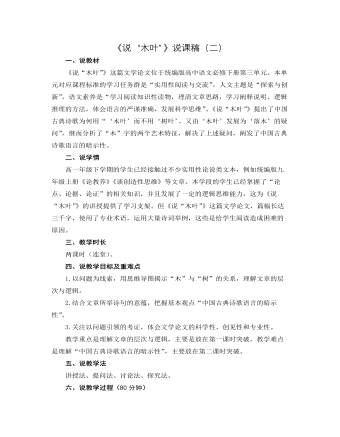
《说“木叶”》说课稿(二) 2021-2022学年统编版高中语文必修下册
一、说教材《说“木叶”》这篇文学论文位于统编版高中语文必修下册第三单元。本单元对应课程标准的学习任务群是“实用性阅读与交流”,人文主题是“探索与创新”,语文素养是“学习阅读知识性读物,理清文章思路,学习阐释说明、逻辑推理的方法,体会语言的严谨准确,发展科学思维”。《说“木叶”》提出了中国古典诗歌为何用“‘木叶’而不用‘树叶’、又由‘木叶’发展为‘落木’的疑问”,继而分析了“木”字的两个艺术特征,解决了上述疑问,阐发了中国古典诗歌语言的暗示性。二、说学情高一年级下学期的学生已经接触过不少实用性论说类文本,例如统编版九年级上册《论教养》《谈创造性思维》等文章。本学段的学生已经掌握了“论点、论据、论证”的相关知识,并且发展了一定的逻辑思维能力,这为《说“木叶”》的讲授提供了学习支架。但《说“木叶”》这篇文学论文,篇幅长达三千字,使用了专业术语,运用大量诗词举例,这些是给学生阅读造成困难的原因。
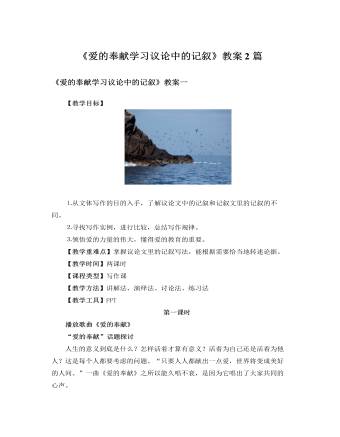
人教版高中语文必修3《爱的奉献学习议论中的记叙》教案2篇
方法点拨教师:有的同学叙述事实论据时,不突出重点和精华,不注意取舍,水分太多,有许多的叙述描写,有时还有详细的故事情节,文章几乎成了记叙文,使文章的论点无法得到充分的证明,这是写议论文的大忌。那么:议论文中的记叙有哪些特点?同学各抒己见。投影显示:1.议论中的记叙不是单纯的写人记事,记叙文字是为议论服务的,其目的是为作者所阐明的道理提供事实依据。所以,在记叙时要求简洁、概括,舍弃其中的细节,仅仅交代清楚事件或者人物的概貌即可,一般不在各种描写手段上下功夫,只要把能证明观点的那个部分、侧面交代清楚就行了。2.议论文中的记叙性文字不得超过总字数的1/3,否则视为文体不当。能力提升一、教师:了解了议论文中的记叙的特点,接下来我们看看今天的话题:“爱的奉献”,你想从哪个角度立论?有哪些素材?
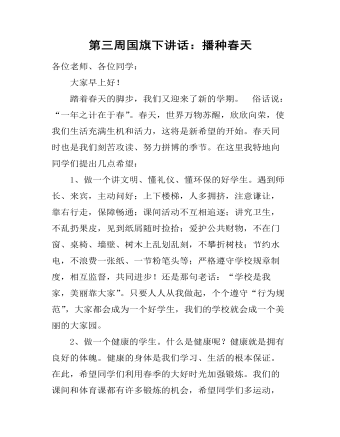
第三周国旗下讲话:播种春天
各位老师、各位同学:大家早上好!踏着春天的脚步,我们又迎来了新的学期。 俗话说:“一年之计在于春”。春天,世界万物苏醒,欣欣向荣,使我们生活充满生机和活力,这将是新希望的开始。春天同时也是我们刻苦攻读、努力拼博的季节。在这里我特地向同学们提出几点希望:1、做一个讲文明、懂礼仪、懂环保的好学生。遇到师长、来宾,主动问好;上下楼梯,人多拥挤,注意谦让,靠右行走,保障畅通;课间活动不互相追逐;讲究卫生,不乱扔果皮,见到纸屑随时捡拾;爱护公共财物,不在门窗、桌椅、墙壁、树木上乱划乱刻,不攀折树枝;节约水电,不浪费一张纸、一节粉笔头等;严格遵守学校规章制度,相互监督,共同进步!还是那句老话:“学校是我家,美丽靠大家”。只要人人从我做起,个个遵守“行为规范”,大家都会成为一个好学生,我们的学校就会成一个美丽的大家园。
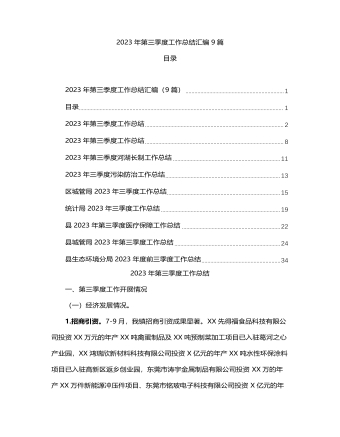
2023年第三季度工作总结汇编9篇
(二)环境卫生治理方面1.道路扬尘治理效果明显。县城主次干道采用“冲、洗、扫、吸”的机械化作业模式,日出动洒水车48车次、洗扫车8车次,日洒水降尘面积200万平方米,机械化洗扫面积175万平方米,每天洒水不低于6次进行除尘,重要点位每天不低于14次,有效遏制道路扬尘污染。2.餐饮油烟污染整治成果显著。2023年,共排查餐饮店982家,其中907家已安装油烟净化设施,75家不具备安装油烟净化设施条件。同时,组织县市场局、生态环境分局联合执法,对学校周边及居民居住区等重点区域的餐饮业噪声及油烟污染情况进行细致摸排整治,今年以来,共开展专项整治行动15次。3.农村人居环境质量明显提升。加强农村生活垃圾治理督查考核,不断提升农村人居环境质量。积极推进农村生活垃圾治理考核下沉机制,修改完善农村生活垃圾治理考核办法,并纳入乡镇目标管理绩效考核任务。突出房前屋后、院落、道路、河塘“四大区域”,紧抓门口、路口、村口、河口“四大关口”,对县域内国省道、桥涵进行日常督查。
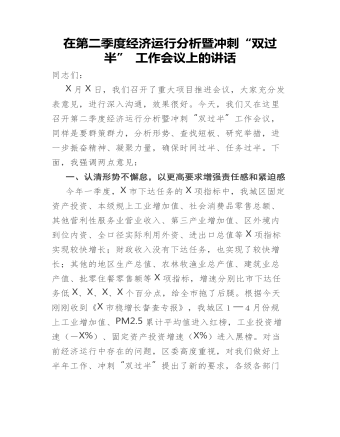
在第二季度经济运行分析暨冲刺“双过半” 工作会议上的讲话
今年一季度,X市下达任务的X项指标中,我城区固定资产投资、本级规上工业增加值、社会消费品零售总额、其他营利性服务业营业收入、第三产业增加值、区外境内到位内资、全口径实际利用外资、进出口总值等X项指标实现较快增长;财政收入没有下达任务,也实现了较快增长;其他的地区生产总值、农林牧渔业总产值、建筑业总产值、批零住餐零售额等X项指标,增速分别比市下达任务低X、X、X、X个百分点,给全市拖了后腿。根据今天刚刚收到《X市稳增长督查专报》,我城区1—4月份规上工业增加值、PM2.5累计平均值进入红榜,工业投资增速(-X%)、固定资产投资增速(X%)进入黑榜。
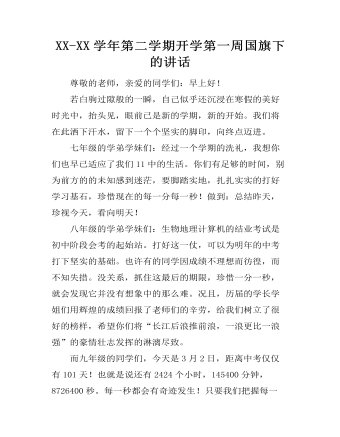
XX-XX学年第二学期开学第一周国旗下的讲话
尊敬的老师,亲爱的同学们:早上好!若白驹过隙般的一瞬,自己似乎还沉浸在寒假的美好时光中,抬头见,眼前已是新的学期,新的开始。我们将在此洒下汗水,留下一个个坚实的脚印,向终点迈进。七年级的学弟学妹们:经过一个学期的洗礼,我想你们也早已适应了我们11中的生活。你们有足够的时间,别为前方的的未知感到迷茫,要脚踏实地,扎扎实实的打好学习基石,珍惜现在的每一分每一秒!做到:总结昨天,珍视今天,看向明天!八年级的学弟学妹们:生物地理计算机的结业考试是初中阶段会考的起始站。打好这一仗,可以为明年的中考打下坚实的基础。也许有的同学因成绩不理想而彷徨,而不知失措。没关系,抓住这最后的期限,珍惜一分一秒,就会发现它并没有想象中的那么难。

镇在2024年第二季度农村人居环境整治工作总结会上的讲话
三要继续强化督查检查,建立长效机制镇人居办要常态化开展督查检查,深入一线发现问题,做到早发现、早制止、早处置,防止小问题变成大麻烦。要明确部门责任、村(街)责任,责任到人,对思想上不重视、行动上不积极、整改上不彻底的单位和个人进行通报,对在上级考核中出现严重问题的将严肃处理。人居环境整治工作既是攻坚战,也是持久战,需要我们常抓不懈、久久为功,各位要坚决克服厌战情绪和侥幸心理,牢固树立“逆水行舟,不进则退,慢进也是退”的理念,争分夺秒抓整治、全力以赴促整改,同时要保持工作韧性和连续性,杜绝“三天打鱼两天晒网”,确保长效管理不松懈、严抓共管不放松、清理彻底不反弹。同志们,人居环境整治工作既是一项民生工程,更是一项民心工程,我们既是建设者,更是受益者。
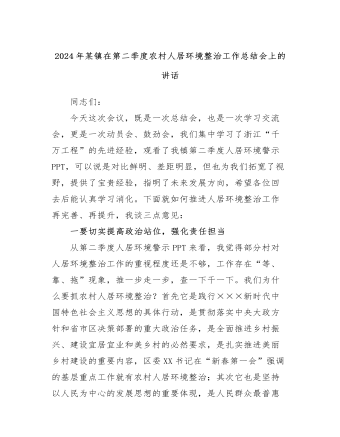
2024年某镇在第二季度农村人居环境整治工作总结会上的讲话
人居环境整治工作既是攻坚战,也是持久战,需要我们常抓不懈、久久为功,各位要坚决克服厌战情绪和侥幸心理,牢固树立“逆水行舟,不进则退,慢进也是退”的理念,争分夺秒抓整治、全力以赴促整改,同时要保持工作韧性和连续性,杜绝“三天打鱼两天晒网”,确保长效管理不松懈、严抓共管不放松、清理彻底不反弹。同志们,人居环境整治工作既是一项民生工程,更是一项民心工程,我们既是建设者,更是受益者。希望大家回去后立即部署、迅速行动、精准发力、狠抓落实,让群众切实感受到人居环境整治的热潮,以时不我待的紧迫感、舍我其谁的使命感、造福一方的责任感推动农村人居环境整治工作再上新台阶,共同把这一事关农业农村高质量发展和群众幸福生活的大事、好事抓好抓实。
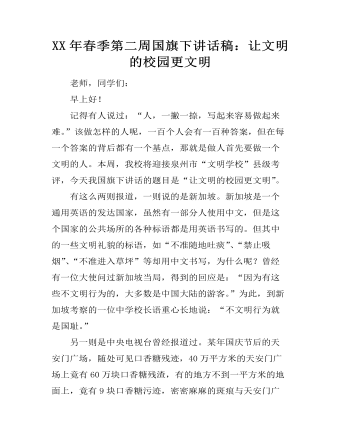
XX年春季第二周国旗下讲话稿:让文明的校园更文明
老师,同学们:早上好!记得有人说过:“人,一撇一捺,写起来容易做起来难。”该做怎样的人呢,一百个人会有一百种答案,但在每一个答案的背后都有一个基点,那就是做人首先要做一个文明的人。本周,我校将迎接泉州市“文明学校”县级考评,今天我国旗下讲话的题目是“让文明的校园更文明”。有这么两则报道,一则说的是新加坡。新加坡是一个通用英语的发达国家,虽然有一部分人使用中文,但是这个国家的公共场所的各种标语都是用英语书写的。但其中的一些文明礼貌的标语,如“不准随地吐痰”、“禁止吸烟”、“不准进入草坪”等却用中文书写,为什么呢?曾经有一位大使问过新加坡当局,得到的回应是:“因为有这些不文明行为的,大多数是中国大陆的游客。”为此,到新加坡考察的一位中学校长语重心长地说:“不文明行为就是国耻。”另一则是中央电视台曾经报道过。某年国庆节后的天安门广场,随处可见口香糖残迹,40万平方米的天安门广场上竟有60万块口香糖残渣,有的地方不到一平方米的地面上,竟有9块口香糖污迹,密密麻麻的斑痕与天安门广场的神圣和庄严形成了强烈反差。
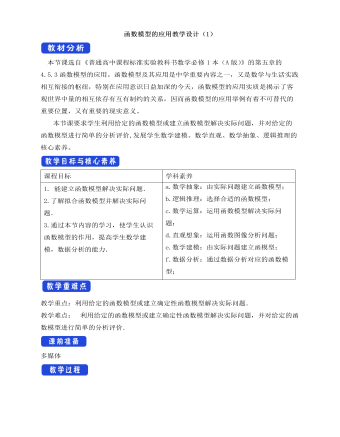
人教A版高中数学必修一函数模型的应用教学设计(1)
本节课选自《普通高中课程标准实验教科书数学必修1本(A版)》的第五章的4.5.3函数模型的应用。函数模型及其应用是中学重要内容之一,又是数学与生活实践相互衔接的枢纽,特别在应用意识日益加深的今天,函数模型的应用实质是揭示了客观世界中量的相互依存有互有制约的关系,因而函数模型的应用举例有着不可替代的重要位置,又有重要的现实意义。本节课要求学生利用给定的函数模型或建立函数模型解决实际问题,并对给定的函数模型进行简单的分析评价,发展学生数学建模、数学直观、数学抽象、逻辑推理的核心素养。1. 能建立函数模型解决实际问题.2.了解拟合函数模型并解决实际问题.3.通过本节内容的学习,使学生认识函数模型的作用,提高学生数学建模,数据分析的能力. a.数学抽象:由实际问题建立函数模型;b.逻辑推理:选择合适的函数模型;c.数学运算:运用函数模型解决实际问题;

人教A版高中数学必修一集合的基本运算教学设计(1)
本节是新人教A版高中数学必修1第1章第1节第3部分的内容。在此之前,学生已学习了集合的含义以及集合与集合之间的基本关系,这为学习本节内容打下了基础。本节内容主要介绍集合的基本运算一并集、交集、补集。是对集合基木知识的深入研究。在此,通过适当的问题情境,使学生感受、认识并掌握集合的三种基本运算。本节内容是函数、方程、不等式的基础,在教材中起着承上启下的作用。本节内容是高中数学的主要内容,也是高考的对象,在实践中应用广泛,是高中学生必须掌握的重点。A.理解两个集合的并集与交集的含义,会求简单集合的交、并运算;B.理解补集的含义,会求给定子集的补集;C.能使用 图表示集合的关系及运算。 1.数学抽象:集合交集、并集、补集的含义;2.数学运算:集合的运算;3.直观想象:用 图、数轴表示集合的关系及运算。


